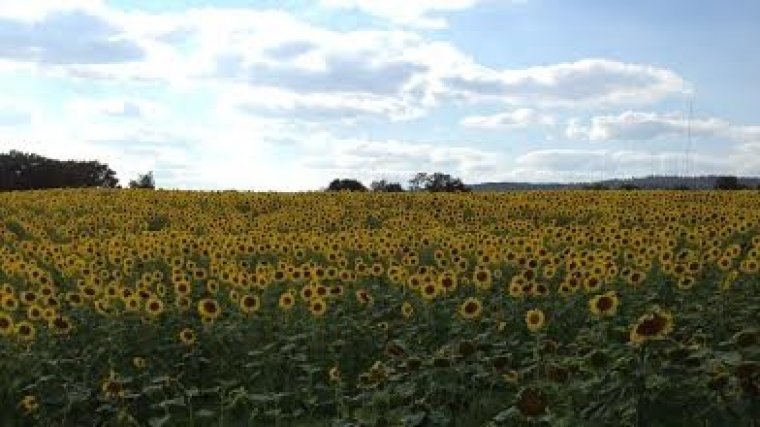| News / Science News |
Sunflowers move from east to west, and back, by the clock
NSF | AUGUST 6, 2016
Plant biologists at University of California, Davis have discovered how sunflowers use their internal circadian "clocks," acting on growth hormones, to follow the sun during the day as they grow.
It's the first example of a plant's clock modulating growth in a natural environment, and having real repercussions for the plant.
Just like people, plants rely on the daily rhythms of day and night to function. Sunflowers, like solar panel arrays, follow the sun from east to west. The researchers tapped into information in the sunflower genome to understand how and why sunflowers track the sun.
Growing sunflowers begin the day with their heads facing east, swing west through the day, and turn back to the east at night.
The plant anticipates the timing and the direction of dawn, and to me that looks like a reason to have a connection between the clock and the growth pathway.
When plants were tracking the sun, the east side of the stem grew more rapidly than the west side, he found. At night, the west side grew faster as the stem swung the other way. The team identified a number of genes that were expressed at higher levels on the sunward side of the plant during the day, or on the other side at night.
There appear to be two growth mechanisms at work in the sunflower stem. The first sets a basic rate of growth for the plant, based on available light. The second, controlled by the circadian clock and influenced by the direction of light, causes the stem to grow more on one side than another, and therefore sway east to west during the day.
As the sunflower matures and the flower opens up, overall growth slows and the plant stops moving during the day and settles down facing east. This seems to be because the circadian clock ensures that the plant reacts more strongly to light early in the morning than in the afternoon or evening, so it gradually stops moving westward during the day.
By measuring the flowers with an infrared camera, they found that the east-facing sunflowers heated up more quickly in the morning -- and also attracted five times as many pollinating insects.
YOU MAY ALSO LIKE





